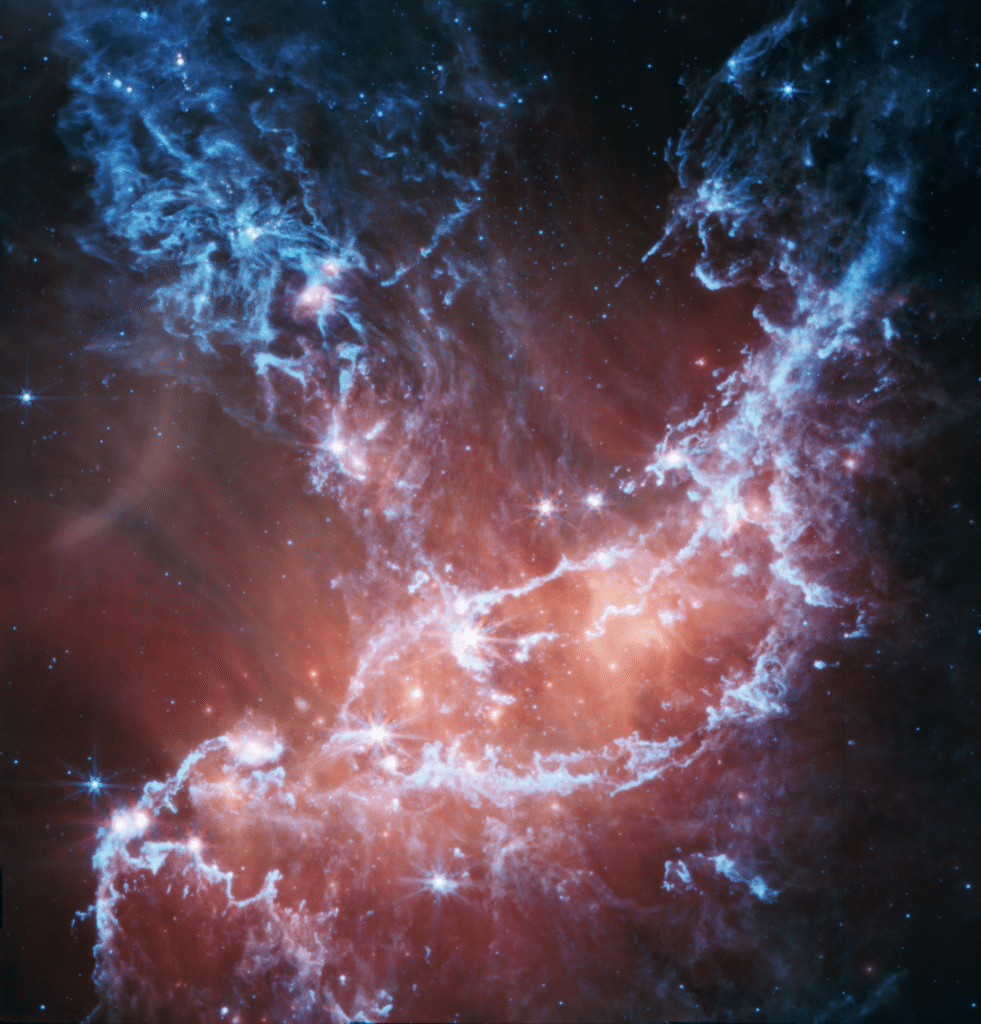Imagine being able to see newborns, still cocooned within their cradle, light years away in the vast expanse of space. The James Webb Space Telescope (JWST), the world’s premier space observatory, has gifted humanity with a breathtaking view into the birthplace of stars, unveiling mysteries and unlocking knowledge about the very essence of our universe.
JWST is not just any telescope; it’s a monumental collaborative effort, combining the expertise of NASA, the European Space Agency (ESA), and the Canadian Space Agency. Its mission is vast: from unraveling the enigmas of our solar system and peeking into the abodes of distant stars to fathoming the origins of our universe.
In the recent snapshot taken by Webb’s Mid-Infrared Instrument (MIRI), we’re introduced to NGC 346, an effervescent star-making region in the Small Magellanic Cloud (SMC). But what exactly is this “cloud”?
A Companion Galaxy: The Small Magellanic Cloud
Floating in space and visible even to the naked eye in the southern constellation Tucana, the SMC is a smaller “sibling” galaxy to our own Milky Way. Think of it as a neighboring island in the vast cosmic sea. What makes the SMC particularly fascinating is that it’s somewhat like a ‘time capsule’ from the past. It has fewer heavy elements than the Milky Way – elements birthed from the fiery forges of stars through nuclear fusion and cataclysmic supernova explosions.
Given its low content of heavy elements, such as silicon and oxygen – which constitute cosmic dust – NASA scientists initially believed the SMC would be pretty “clean.” However, much to their surprise, Webb’s images showcase a significant amount of dust dancing within the NGC 346 region.

Decoding Colors in the Cosmic Canvas
The colors in the MIRI image aren’t arbitrary. NASA researchers say that the blue patterns sketch out emissions from dusty silicates and a unique type of sooty molecules termed polycyclic aromatic hydrocarbons (PAHs). In simpler terms, these PAHs are large, structured groups of carbon and hydrogen. Meanwhile, the softer red hues emanate from warm dust, heated up by the brilliance of massive stars right in the region’s core.
Highlighted in the image are arcs, similar to rainbows, which might be reflections from stars. These stars are shrouded in dusty cocoons, resembling infants snuggled in blankets. Out of these, 1,001 radiant sources were identified by researchers as mostly young stars, still swaddled in their protective dust.
With this data, astronomers are piecing together a more comprehensive picture of the starry ensemble in NGC 346. And this isn’t just a tale of one galaxy; it offers a glimpse into what galaxies might have looked like billions of years ago. This was a time often referred to as the “cosmic noon,” a bustling period in the universe’s history when star birth was rampant, and galaxies were awash with a makeup similar to the SMC.
In essence, each image from the JWST isn’t just a beautiful scene; it’s a chapter in the ever-evolving story of the cosmos, helping us understand our place in the grand tapestry of the universe.











